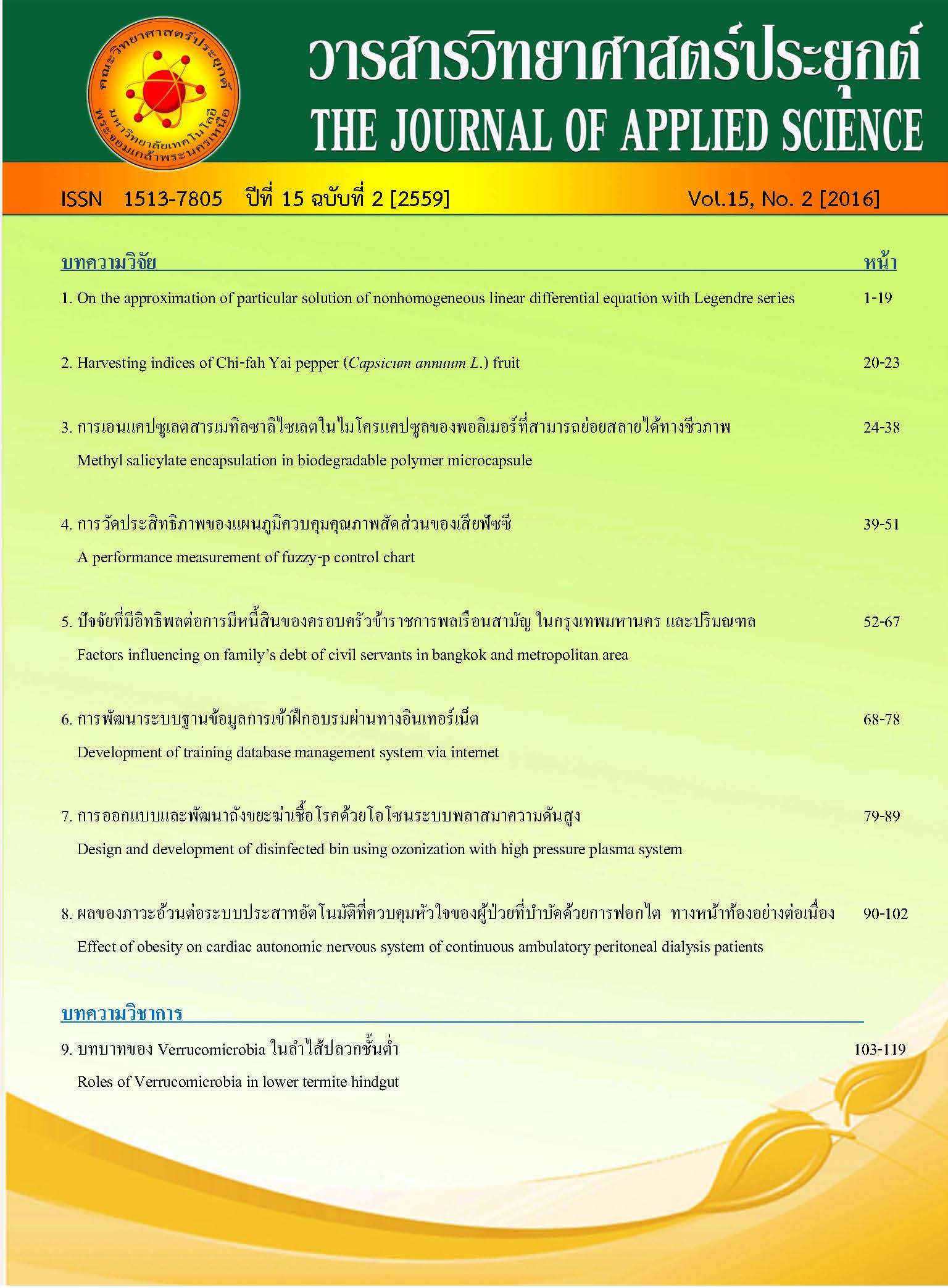Harvesting indices of Chi-fah Yai pepper (Capsicum annuum L.) fruit
Keywords:
chilli, fruit ripening, maturity indexAbstract
Maturity of chili and pepper fruits can be predicted from the peel color. The mature green stage of Chi-fah Yai pepper fruit contained highest amount of chlorophyll (0.42 g/gFW) and the chlorophyll declined in red stage (0.1 g/gFW). Conversely, chlorophyllase activity increased when pepper fruit turned from green (0.18 unit/min/mg protein) to reddish-green (0.61 unit/min/mg protein). For anthocyanin accumulation, synthesis of this pigment began at the mature green stage and elevated until fully red stage. Similar to fruit ripening pattern, total sugar content raised from mature green to reddish-green stages and slightly declined in fully red stage. In case of ascorbic acid, this antioxidant content increased throughout fruit developmental stage. For capsaicin, the hot or pungency taste, it was found in both of inner wall pericarp and placenta and this compound slightly increased during fruit ripening on plant. Thus, we suggested that Chi-fah Yai pepper fruit should be harvested from stage 3 because it riches of nutritional value such as total sugar, ascorbic acid and capsaicin.


